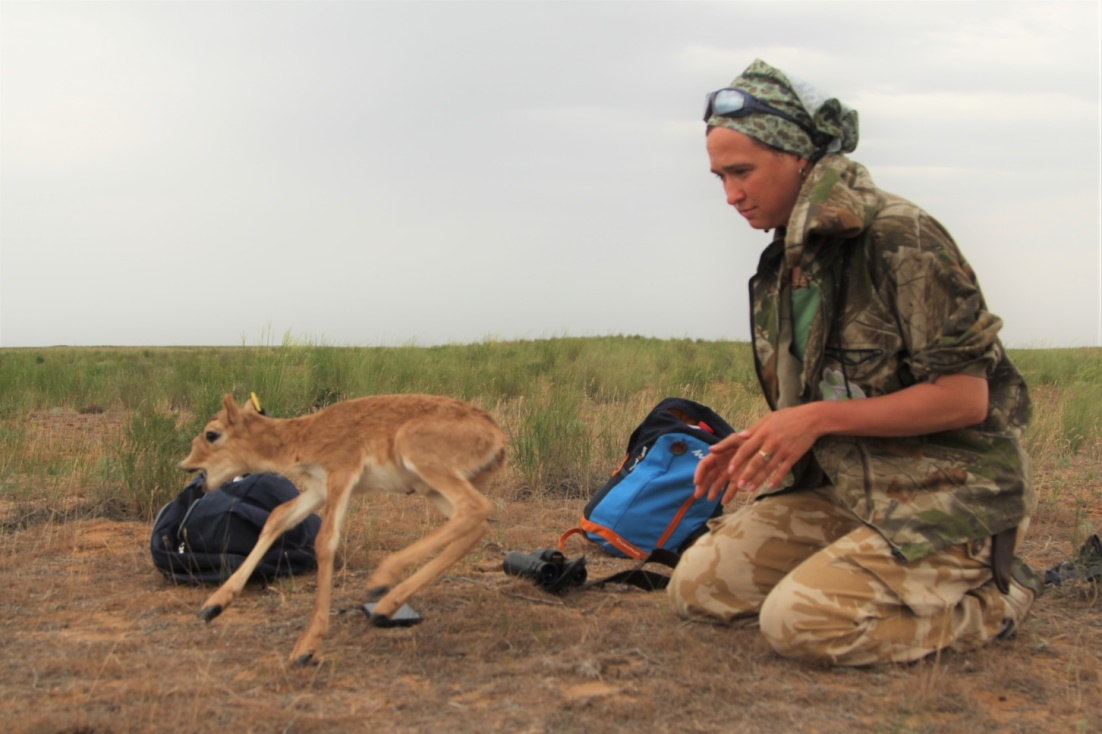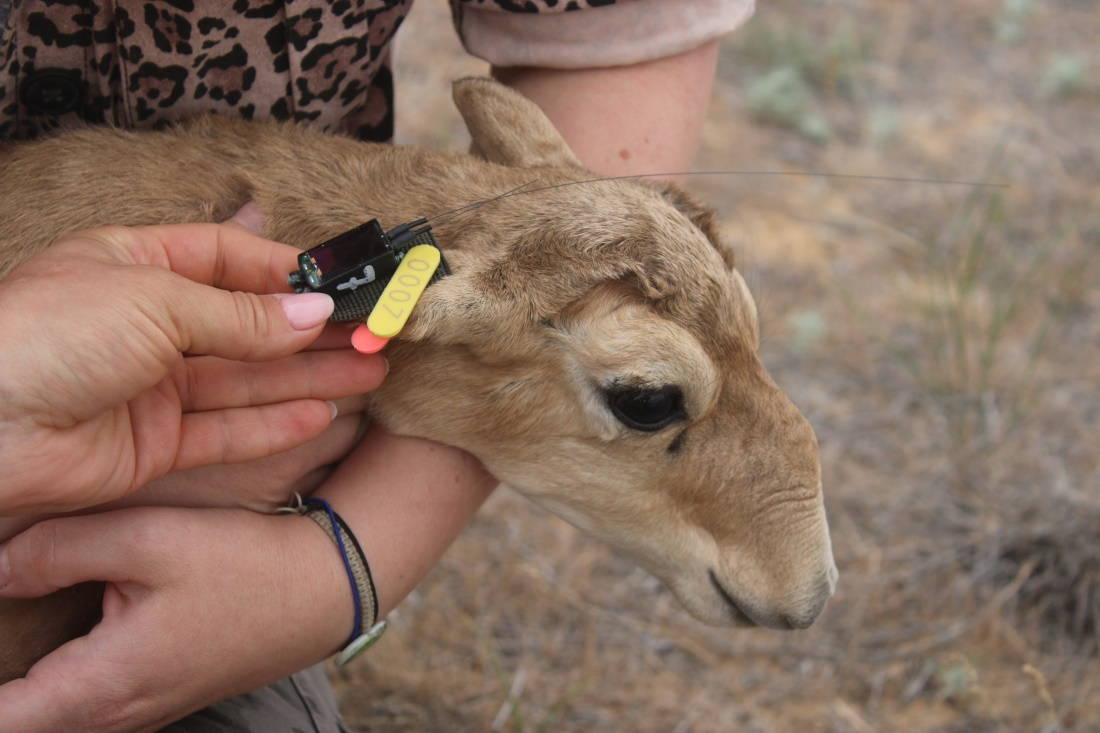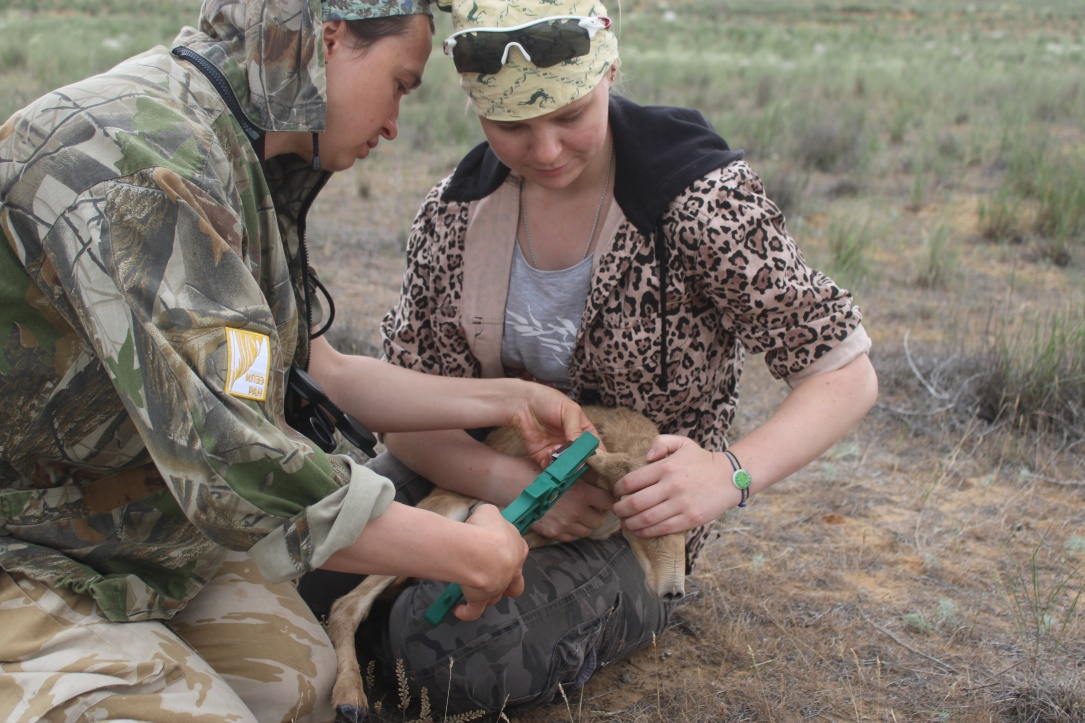
In the Stepnoy Wildlife Refuge (Astrakhan Oblast), the work of a group of employees of the A.N. Severtsov Institute of Ecology and Evolution RAS (IEE RAS) under the leadership of RAS Academician V.V. Rozhnov continues the tagging of newborn saigas with ultra-light ear tags that do not cause disturbance to the animals. This is a continuation of the development of the technology for studying the movements of saigas using scientific equipment installed on the Russian segment of the ISS. While tagging the saiga calves, not a single animal was harmed. Earlier, we reported on the cooperation of the IEE RAS with the Max Planck Institute of Animal Behavior, Germany, the Institute of Geography of the Russian Academy of Sciences and RSC Energia, within the framework of which the employees of the IEE RAS take part in the implementation of the Russian-German project ICARUS. The goal of this project is to organize global monitoring of the movement of animals from space in order to understand the reasons for their movements and to understand the complex processes taking place in ecosystems.
At the end of 2020, the first five transmitters were tested on adult saigas. In agreement with the partners and after obtaining the necessary permits, it was decided to tag saigas with miniature ICARUS Basic Tag Solar / GPS devices powered by solar batteries that were placed on the animals’ mammalian ear tag platform.
At the time of calving on the territory of the Stepnoy reserve, where pregnant females had accumulated, in total, according to expert estimates, there were up to 6 thousand saigas. Although the first newborn saiga calf was observed in the afternoon of April 30, and the last - on May 22, mass calving in the reserve took place from May 12 to May 14 this year.

Installing the clip on a young saiga
Taking into account the plans of the Astrakhanskoye POOH management to release three adult saigas from the Saigak nursery in June of this year, it was decided to equip these soon to be released animals with the same ultra-light ear tags. Currently, the transmitters attached to saigas are being tested in the nursery's enclosures, but soon these animals will also go into the wild steppe.
The saiga population research project is being carried out by IPEE RAS specialists in cooperation with the management of the Stepnoy Nature Reserve in the Astrakhan Region, which has been selected as a model area, and the Saigak Nursery of the Astrakhanskoye State Housing Organization. Its goal is to obtain reliable data on the current state of the saiga population in the North-Western Caspian region.
The data on saiga movements obtained during the implementation of the project will be used to prepare and scientifically substantiate the most effective recommendations aimed at preserving and restoring the saiga population in the North-Western Caspian region - the only population that lives only within the Russian Federation.

Installing the clip with the ultralight transmitter “Icarus” with a solar battery
Материалы по теме:
РИА Волга: "В астраханском заказнике новорожденных сайгаков отслеживают со спутника"
